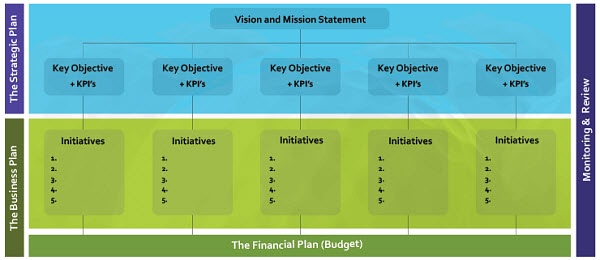Planning
Business
2025 National Salary and Wages Survey results
Click HERE to view the results of the survey
2024 National Salary and Wages Survey results
Click here to view the results of the survey
Click here to view the results of a summary of the survey by Zone.
Click here to view the results of a summary the survey by Size of Club.
2023 National Salary and Wages Survey results
Click here to view the results of the survey
Comprehensive Recruitment Guide
Having trouble finding staff. Click here to view guide
Business Planning
Every successful business needs a clear strategic plan—one that is developed, implemented, and regularly reviewed.
For New Zealand golf clubs, many of which are significant commercial organisations with large asset values, having a detailed strategic plan is critical to building a sustainable future.
At its core, a strategic plan defines the club’s purpose, sets its direction, and outlines how the organisation will operate to achieve its goals. Clear strategic objectives guide the entire business and provide the foundation for a more detailed business plan.
Section Contents
- The Strategic Plan & The Business Plan – An Overview
- The Planning Process
- Developing a Vision & Mission Statement
- External Analysis (PEST)
- Internal Analysis (SWOT)
- Setting Key Objectives & Measuring Performance
- The Business Plan – An Overview
- Marketing Planning (currently being uploaded)
- Competitor Analysis
- Market Research
- Segmentation & Targeting
- Specific Marketing Tactics & Programmes
The Strategic Plan – An Overview
A strategic plan sets out the long‑term goals (typically 3–5 years) of a golf club. It defines the club’s mission and direction while broadly outlining how the organisation will operate to achieve its desired outcomes.
A strategic plan usually includes:
- A Vision and/or Mission Statement
- Key Strategic Objectives
- KPIs / Performance Measures
- Key Priorities / Action List
The Business Plan – An Overview
The business plan is a more detailed document that explains exactly how the strategic vision will be delivered. It builds on the strategic plan and adds specific information about how the club will operate in the short term (1–2 years) to achieve the objectives set out in the strategic plan.
✨ This version keeps the professional detail but makes it warmer, clearer, and easier to follow.
Would you like me to also condense this into a quick “board‑ready summary” that highlights the difference between a strategic plan and a business plan in just a few bullet points?

:
The Planning Process

Golf clubs in New Zealand operate in a constantly changing environment, with new challenges always emerging.
A strong planning process helps clubs understand these challenges, make smarter strategic decisions, and set a clear direction that members and stakeholders can support.
Without good planning, clubs risk making poor choices and falling into a reactive rather than proactive way of operating.
The Planning Process
A strong planning process is continuous and usually involves four key stages:
- Preparation – Set a clear timeline and assign responsibilities to guide the planning process.
- Development – Identify strategic challenges, explore options, and decide on the overall direction and desired outcomes.
- Implementation – Translate the strategic plan into a detailed annual business plan.
- Monitoring – Track performance results and make adjustments to keep the plan relevant and effective.
Devloping A Strategic Plan for Your Golf Club
Tips for Writing Formal Club Plans
When preparing any formal plans for your club, keep these guiding principles in mind:
- Keep it Simple – Use clear language and a logical structure so staff and stakeholders can easily follow.
- Keep it Concise – Plans should be thorough but practical; avoid unnecessary detail that makes them too long.
- Focus on Results – Plans only matter if they lead to action. Include performance measures and evaluation systems.
- Be Flexible – Planning is dynamic. Ensure your plan can adapt to changes when needed.
- Collaborate – Involve key stakeholders in the process. Their input builds support and ownership of the plan.
- Involve External People – Invite outside perspectives to challenge assumptions and spark fresh thinking.
- Communicate – Share the plan clearly and consistently with members and stakeholders so everyone understands the direction and purpose.
Developing a Vision & Mission Statement
The first step in creating a strategic plan is setting a vision and/or mission statement. These provide the foundation for how your club operates.
- Vision Statement – Describes the preferred future your club aims to achieve in the next 3–5 years. It should be inspirational and capture the essence of your ideal future.
- Mission Statement – Defines your club’s basic purpose: the what, how, and why of its existence.
Questions to Ask When Developing Vision/Mission:
- What is the current purpose of our golf club?
- Why does our club exist?
- If our club didn’t exist, why would we create it?
- Who are we serving, and who benefits from our existence?
- What’s most important to us as a golf club?
Establishing Values
Alongside vision and mission, a strategic plan should include a set of values. Values describe how your club operates, shaping the attitudes and behaviours expected of staff and members.
Questions to Ask When Defining Values:
- What values are inherent in golf as a sport?
- What is the spirit or ethos of our club?
- What does our club stand for?
- How do we want to interact with each other and the wider community?
- What behaviours should we encourage among staff and members?
- What makes our club unique and attractive to members?
Together, the vision and values form the ongoing purpose of the organisation.
External Analysis (PEST)
Understanding external influences is vital. While clubs can’t control these factors, they can anticipate and respond to them. A PEST analysis helps assess:
- Political – Priorities, legislation, regulations
- Economic – Wealth, employment trends, economic conditions
- Social – Demographics, lifestyle patterns, attitudes
- Technological – Communication, information systems, transport, entertainment
Questions to Ask:
- What major changes are happening now?
- How are these changes impacting our club?
- What changes are likely in the future?
- Which impacts are threats to manage, and which are opportunities to seize?
Internal Analysis (SWOT)
A SWOT analysis examines your club’s internal position by identifying:
- Strengths – What your club does well
- Weaknesses – Areas needing improvement
- Opportunities – External factors you can leverage
- Threats – Risks that could hinder success
This analysis provides a strong foundation for future strategic and marketing plans.
Setting Key Objectives
Strategic objectives shape the direction and operation of a golf club. They provide clarity on where the club is heading and how it will get there.
This important function should be led by the board, following wide consultation and careful analysis. When defining objectives, clubs might ask:
- Will our members and stakeholders support these objectives?
- Can we realistically deliver this strategic direction?
- Do the objectives align with our vision and mission?
- Will they help future‑proof the club and ensure sustainability?
- Do they build on our strengths and take advantage of opportunities?
- Will they help us overcome weaknesses and minimise threats?
- Do they provide a competitive advantage for the club?
Measuring Performance
Performance measures—often called Key Performance Indicators (KPIs)—are essential for tracking both short‑ and long‑term progress. All KPIs should link directly to the outcomes defined in the strategic plan.
To make objectives more effective, they should be SMART:
- Specific – Clearly describe what will be achieved
- Measurable – Allow realistic monitoring of progress
- Achievable – Be realistic and within the club’s capability
- Relevant – Connect to the vision and desired change
- Time‑defined – Include deadlines for achievement
SMART objectives ensure accountability at board, management, and staff levels, and tie directly into the business plan performance measures.
The Business Plan – An Overview
Once the strategic plan is set, the next step is to create a business plan. This translates strategic direction into practical actions that deliver results.
Business plans can be detailed, incorporating the strategic plan alongside marketing, financial, and management components. It’s important that all parts of the club contribute to achieving the outcomes—business units should not plan in isolation but work together toward shared goals.
A detailed business plan might include:
- Title Page – Period covered and date written
- Contents – Sections and page references
- Executive Summary – Background, purpose, preparation, and intentions
- Strategic Plan – Vision, mission, and strategic objectives
- Marketing Plan – Market demographics, products/services, pricing, competition analysis, promotional strategies
- Financial Plan – Budgets, cash flows, assets, and liabilities
- Management Plan – Membership, board structure, staff, organisation chart, constitution, and legal documents
- Appendices – Supporting documents referenced in the plan
A basic operational plan might include:
- Strategic Objectives
- Initiatives to Achieve Objectives
- Key Performance Indicators
- Budget
- Timelines
- Responsibilities
Setting Key Objectives
Strategic objectives shape the direction and operation of a golf club. They provide clarity on where the club is heading and how it will get there.
This important function should be led by the board, following wide consultation and careful analysis. When defining objectives, clubs might ask:
- Will our members and stakeholders support these objectives?
- Can we realistically deliver this strategic direction?
- Do the objectives align with our vision and mission?
- Will they help future‑proof the club and ensure sustainability?
- Do they build on our strengths and take advantage of opportunities?
- Will they help us overcome weaknesses and minimise threats?
- Do they provide a competitive advantage for the club?
Measuring Performance
Performance measures—often called Key Performance Indicators (KPIs)—are essential for tracking both short‑ and long‑term progress. All KPIs should link directly to the outcomes defined in the strategic plan.
To make objectives more effective, they should be SMART:
- Specific – Clearly describe what will be achieved
- Measurable – Allow realistic monitoring of progress
- Achievable – Be realistic and within the club’s capability
- Relevant – Connect to the vision and desired change
- Time‑defined – Include deadlines for achievement
SMART objectives ensure accountability at board, management, and staff levels, and tie directly into the business plan performance measures.
The Business Plan – An Overview
Once the strategic plan is set, the next step is to create a business plan. This translates strategic direction into practical actions that deliver results.
Business plans can be detailed, incorporating the strategic plan alongside marketing, financial, and management components. It’s important that all parts of the club contribute to achieving the outcomes—business units should not plan in isolation but work together toward shared goals.
A detailed business plan might include:
- Title Page – Period covered and date written
- Contents – Sections and page references
- Executive Summary – Background, purpose, preparation, and intentions
- Strategic Plan – Vision, mission, and strategic objectives
- Marketing Plan – Market demographics, products/services, pricing, competition analysis, promotional strategies
- Financial Plan – Budgets, cash flows, assets, and liabilities
- Management Plan – Membership, board structure, staff, organisation chart, constitution, and legal documents
- Appendices – Supporting documents referenced in the plan
A basic operational plan might include:
- Strategic Objectives
- Initiatives to Achieve Objectives
- Key Performance Indicators
- Budget
- Timelines
- Responsibilities



























